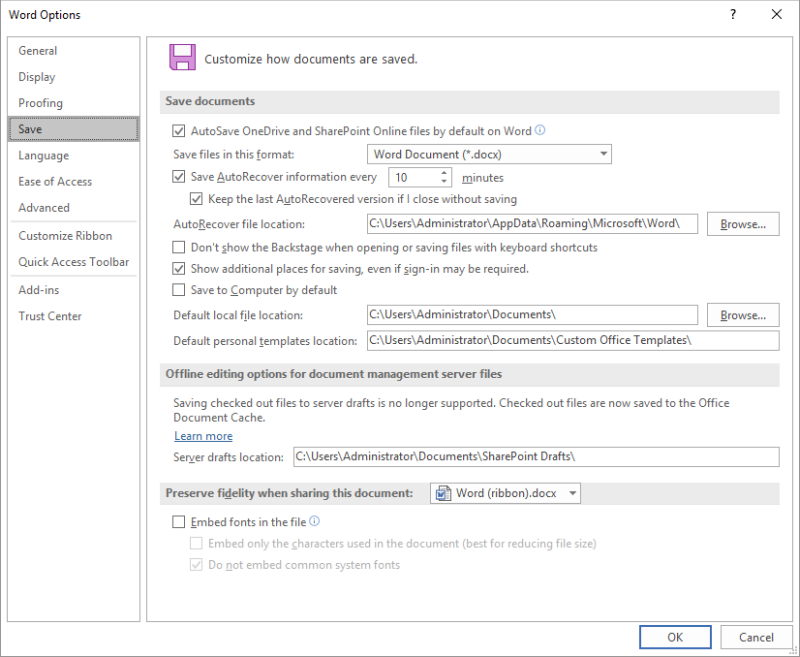Please Note: This article is written for users of the following Microsoft Word versions: 2007, 2010, 2013, 2016, 2019, and 2021. If you are using an earlier version (Word 2003 or earlier), this tip may not work for you. For a version of this tip written specifically for earlier versions of Word, click here: Font Substitution Problems.
Written by Allen Wyatt (last updated May 26, 2023)
This tip applies to Word 2007, 2010, 2013, 2016, 2019, and 2021
Font issues, when it comes to Word, are always interesting. The fonts used in Word are those that are installed within Windows. When you first install Windows, only a limited number of fonts are available on a system. As you install other software, other fonts are added to Windows, and those fonts automatically become available to Word. The problem is that over time, every system will have different fonts available on it. This is because different software is installed on each system, and each piece of software has its own set of fonts.
A real problem crops up when you create a Word document on one system, using the fonts available on that system, and then transfer the document to a different system. When you open the document on the other system, not all the fonts used in the document may be available on that new system. If a font is not available, Word substitutes what it believes to be the most similar font that is available, often with unpredictable results.
The best way around this problem is to make sure that both systems have the same fonts installed. In an office environment, this is not an unreasonable expectation, but it does take a bit of management time on the part of users. Some companies have solved the problem by specifying what fonts can be used in official company documents—fonts that are, again, available on all company systems.
If you cannot be sure that a font will be available, and you must use that font, and the font at issue is a TrueType font, then you can follow these steps:

Figure 1. The Save options of the Word Options dialog box.
You should realize that embedding TrueType fonts can increase the size of your document files. In fact, if you use a lot of fonts, it can increase the size drastically. (This is why you should make sure you do step 5 in the above steps.) In addition, not all TrueType fonts are "embeddable." Some fonts are protected by their creators against distribution by embedding. If you are curious about whether a particular font can be embedded, you can either contact the vendor or download a free Font Properties Extension Tool from Microsoft. You can download it at the following address:
https://docs.microsoft.com/en-us/typography/tools/font-properties-editor
The tool updates Windows so it displays more information when you right-click on a font file and choose Properties. One of the pieces of information displayed is whether the font is protected or not. If it is protected, it cannot be embedded in a Word document.
You should note that the tool is rather old, so it was written for older versions of Windows. Because of this, it is entirely possible that if you are using Windows 10, it may not work on your system.
WordTips is your source for cost-effective Microsoft Word training. (Microsoft Word is the most popular word processing software in the world.) This tip (7836) applies to Microsoft Word 2007, 2010, 2013, 2016, 2019, and 2021. You can find a version of this tip for the older menu interface of Word here: Font Substitution Problems.

Discover the Power of Microsoft Office This beginner-friendly guide reveals the expert tips and strategies you need to skyrocket your productivity and use Office 365 like a pro. Mastering software like Word, Excel, and PowerPoint is essential to be more efficient and advance your career. Simple lessons guide you through every step, providing the knowledge you need to get started. Check out Microsoft Office 365 For Beginners today!
Different machines can have different fonts installed on them. Because of this, it is possible for a document that looks ...
Discover MoreIf you have a document that has some sort of keyword within it (such as "Section") you may want to automatically format ...
Discover MoreWord allows you to shade entire paragraphs or simple selections of text. This is a great way to highlight information on ...
Discover MoreFREE SERVICE: Get tips like this every week in WordTips, a free productivity newsletter. Enter your address and click "Subscribe."
There are currently no comments for this tip. (Be the first to leave your comment—just use the simple form above!)
Got a version of Word that uses the ribbon interface (Word 2007 or later)? This site is for you! If you use an earlier version of Word, visit our WordTips site focusing on the menu interface.
Visit the WordTips channel on YouTube
FREE SERVICE: Get tips like this every week in WordTips, a free productivity newsletter. Enter your address and click "Subscribe."
Copyright © 2025 Sharon Parq Associates, Inc.
Comments